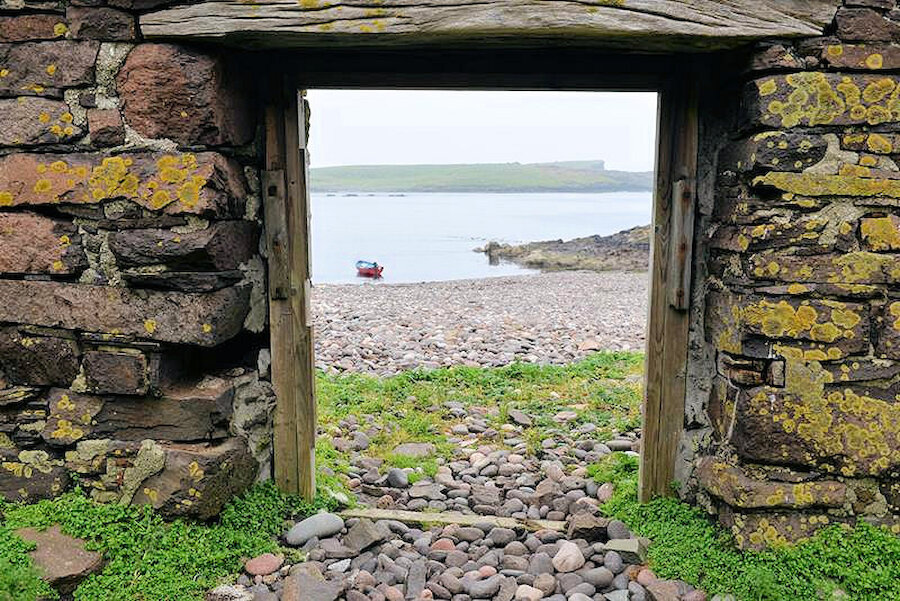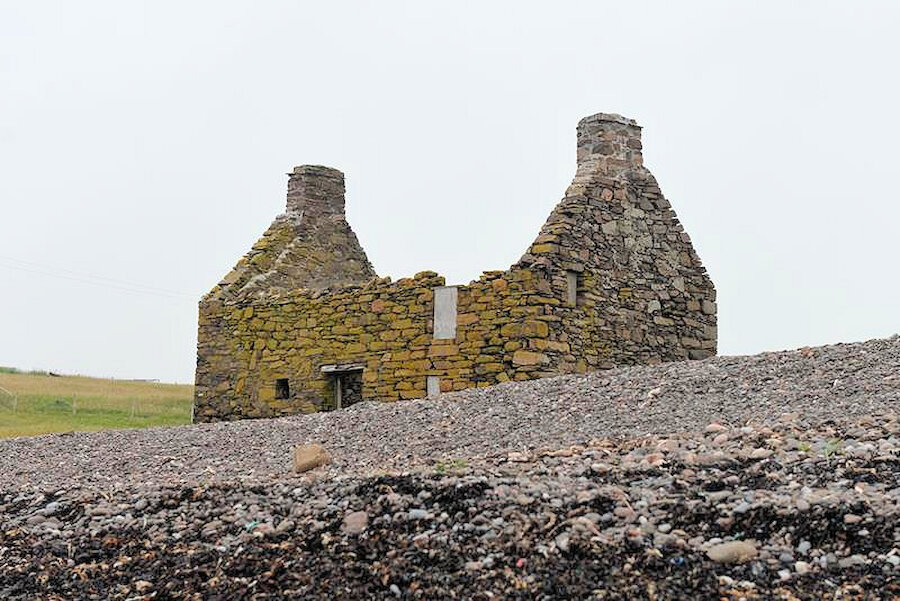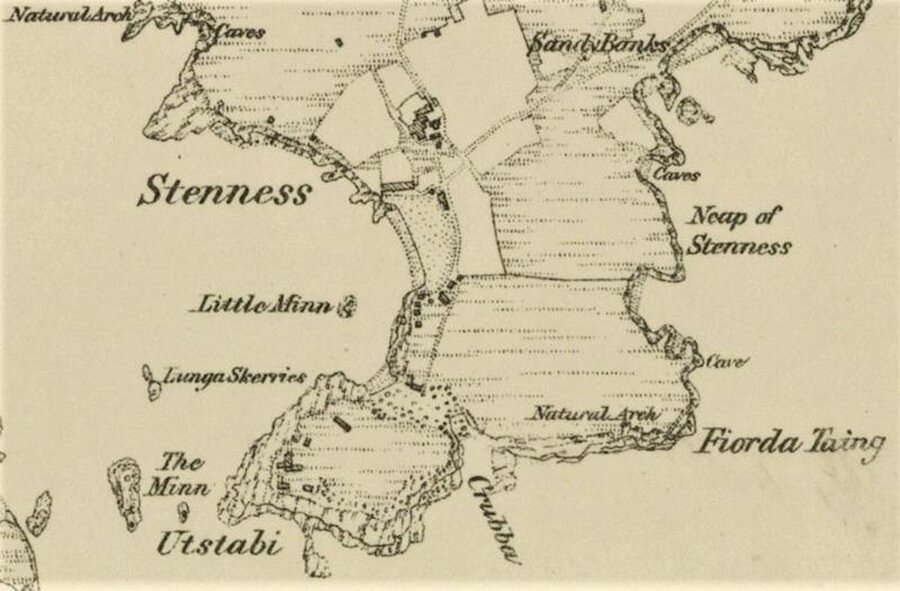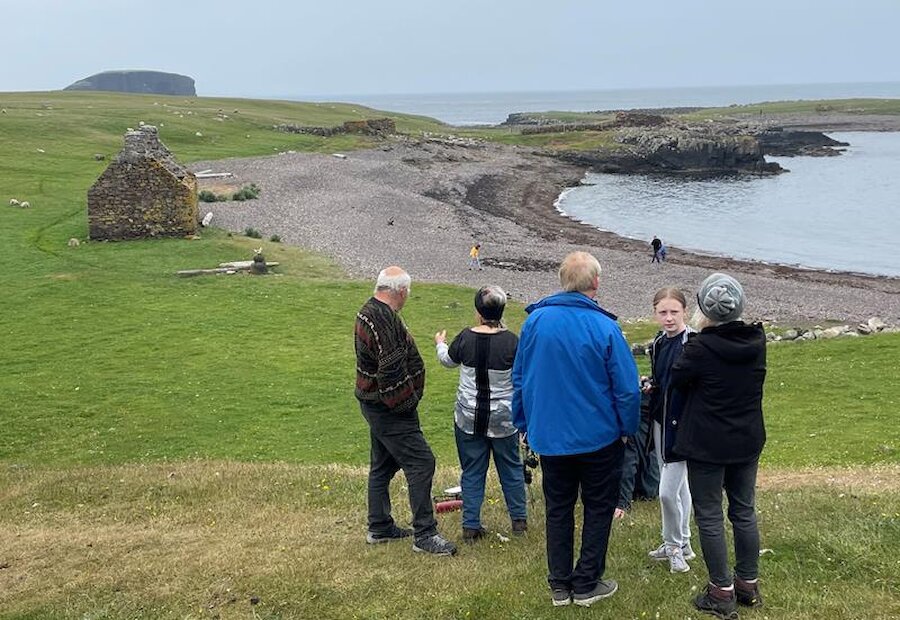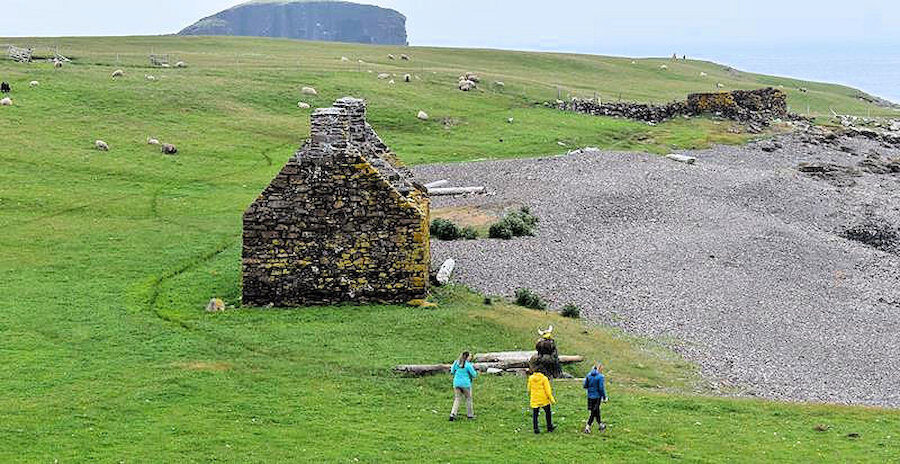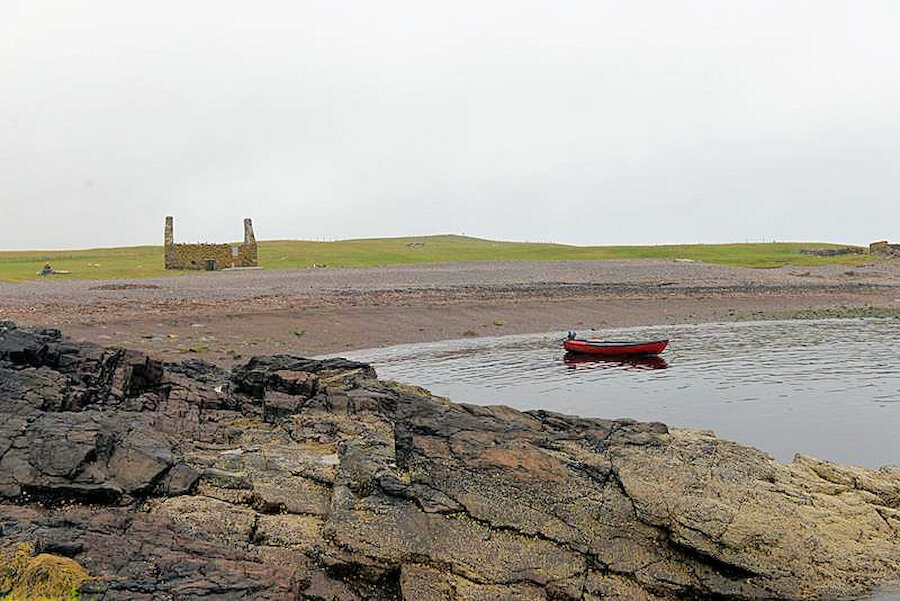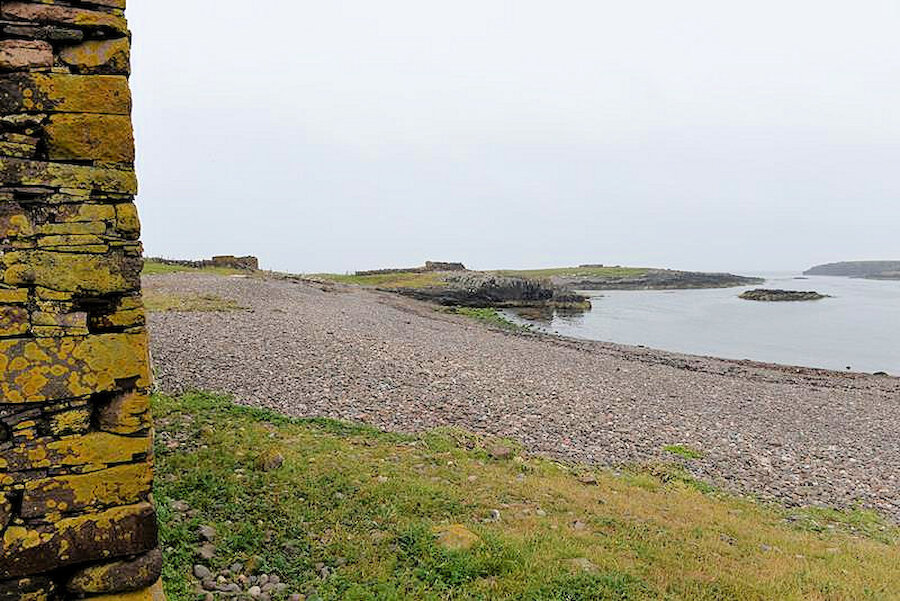The “Sound Walk” forms part of a project entitled Confusing shadow with substance. The artists behind it are Janette Kerr, who has a long association with Shetland, and Jo Millett, who works in film and sound. In 2017, they collaborated in an exhibition with that title at the Shetland Museum and Archives. That installation is going to be shown again - as a tour - starting as part of Shetland's ScreenPlay festival and beginning at the Burra Heritage Centre at Easthouse, Papil, West Burra over the weekend of 3 - 5 September; during 2022, it will visit another five venues around Shetland and Scotland.
Visitors to a former fishing station in Shetland’s north mainland will soon be able to imagine themselves there when it was active in the 19th century. Thanks to a phone app and GPS technology, they’ll hear a specially-recorded narrative, each section of which is linked to a different part of the site.
The soundscape that Janette and Jo have created in collaboration with the artists' collective Satsymph, and which was recently tested by volunteers, portrays the 19th century beach as a hive of activity, where communities of fishermen and traders made temporary homes over the summer months.
Today, the many stone ‘booths’ that they occupied are mostly ruinous; only one has its walls intact.
All of that said, fishing has never been the safest of occupations and that was especially true when Stenness was in its heyday. The crews would row their six-oared open boats far out to sea, perhaps 40 or 50 miles offshore, and that meant that a rapid change in the weather could lead to tragedy. Such events happened from time to time around the islands, devastating communities.
Life was tough in other ways, too; the local lairds and their factors controlled the industry, and woe betide fishermen who got into debt or who were unable to catch the expected quantity of fish. Today, surrounded by some of Shetland’s most spectacular coastal scenery, we shouldn’t forget their struggle.
The narrative reflects and illustrates those hard times, drawing on a range of sources, including observations of early travellers visiting Stenness, and archival documents directly relating to the deep sea, or ‘haaf’ fishing. Examples are the 1822 Description of the Shetland Islands by Samuel Hibbert and Christian Ployen’s reminiscences of a voyage, published in 1839.
Local voices are used in the reading of extracts from these and other works. There are accounts of agreements binding men to the summer fishing, indebtedness, accounts of storms and loss of life, and even what the fishermen bought for their tea; many different voices are featured in the telling.
Also heard in the soundtrack is a haunting fiddle tune, Shingly Beach, written about this place by the celebrated fiddler and teacher Tom Anderson. It’s beautifully played by his grand-daughter, the well-known Catriona Macdonald.
So, how does the Sound Walk work? To experience it, you need a mobile phone - iPhone or Android both work - and headphones or earbuds. Search for and download the app, called SatsymphQR, from the App Store or GooglePlay. It’s best to do this on a fast wifi connection. Open the app, press 'Scan QR' and point the camera at the QR. This downloads the Stenness material to your phone. Then head to the beach. You don't need a network signal or phone connection at the beach - it all works on your phone's GPS! You can find full instructions, and the QR code (reproduced below), here.
Once at the beach, with headphones on, opening the app will begin the audio presentation. Moving around the beach, users will come across 20 different ‘sound clouds’, each telling a part of the story.
On entering one of these areas, there are changes in the background sounds, for example the crash of a wave, a bell ringing, a seabird calling, or even a luder horn. The sound becomes louder and will change as the user moves in and out of the sound pools. It really is a remarkable experience.
The care and attention to detail that Janette and Jo have exercised in putting the Sound Walk together is, at least in part, testimony to the earlier work they’ve done at Stenness.
Their 2017 exhibition at the Shetland Museum’s gallery was a multi-screen and sound installation, which looked at Shetland’s relationship with the sea through a Stenness lens. Like the Sound Walk, it merged spoken testimony, music and images.
Janette and Jo have clearly been well supported by Ralph Hoyte and Phill Phelps of Satsymph, a Somerset-based artists’ collective that specialises in creating interactive, location-based sound worlds.
Janette hopes that the Sound Walk will draw people to Stenness. As she says, it’s “an advanced technology project in a remote setting”, and she hopes that visitors will be keen to try it out.
The technology really is cutting-edge and, from the enthusiastic reception that the project received during that recent testing session, it’s clear that local people are keen to embrace it; no doubt visitors will, too.
It will be launched on 1 September 2021, coinciding with the opening of ScreenPlay, and will be available to anyone visiting Stenness from then on.
We wish the project well.


